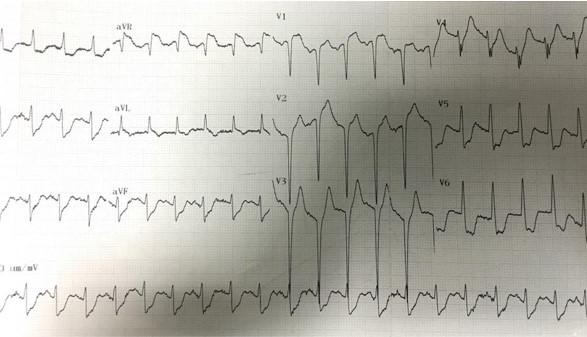Lots of interesting abstracts and cases were submitted for TCTAP & AP VALVES 2020 Virtual. Below are accepted ones after thoroughly reviewed by our official reviewers. Don¡¯t miss the opportunity to explore your knowledge and interact with authors as well as virtual participants by sharing your opinion!
* The E-Science Station is well-optimized for PC.
We highly recommend you use a desktop computer or laptop to browse E-posters.
CASE20200925_007
| Complex PCI - Bifurcation/Left Main Diseases and Intervention | |
| LM Bifurcation with Cardiogenic Shock | |
| Thanawat Suesat1 | |
| Khon Kaen Hospital, Thailand1, | |
|
[Clinical Information]
- Patient initials or identifier number:
mrs. O N
-Relevant clinical history and physical exam:
82 year old Thai femaleCC: chest pain for 2 day underlying disease DM , HT , CKD , old CVA , COPDBP : 80/50 mmHg , RR 20 bpm Good consciousness normal heart sound , lung clear , no edema Dx . NSTEMI high risk with cardiogenic shock blood test BUN 60 , Cr = 3.2 , Trop T 556 ECG : Q V1-V3 , ST elevation V1 , AVR and generalized ST depression CXR : mild cardiomegaly Echo : mild LV dilatation , hypokinesia anterior and lateral wall LVEF = 32 % , mild MR , no clot
  -Relevant test results prior to catheterization:
- Relevant catheterization findings:
CAG : LM: 98 % LM stenosis from ostial to distal bifurcation ( medina 1,0,1 )LAD : 50 % mid LAD stenosis LCX : 60 -70 % ostial LCX stenosis , 70 % mid LCX stenosis
RCA : 50 -60 % mid RCA stenosis |
|
|
[Interventional Management]
- Procedural step:
at first on IABP for hemodynamic support admit @ CCU and patient was advice for CABG , however denied for Sx later developed VT and sent to PCI to LM bifurcationfemoral approach , 7F guiding JL4/side hole to LCAwhisper wire to LAD --> VT then dilated LM with 2.0 x 20 balloon after that wire to LCX and dilated with 2.0 x 20 @ 14 atm --> plaque shift to LAD thenfirst kissing balloon with 3.0 x 20 @ LAD and 2.0 x 20 @ LCX then IVUS was checked show diffused disease from ostial LM-proximal LCX and minimal disease at ostial LADthen DK crush was performed with Xience Prime DES 4.0 x23 @ LAD-LM and Xience Prime DES 3.5 x 23 @ LCX then FKB and final POT IVUS was check for stent optimization and area , FFR mid LCX = 0.85 patient was sent to CCU with stable , off IABP at day 2
patient discharge at day 5 Echo follow up at 3 month LVEF improve to 52 % , FC 2follow up angiogram at 1 year with patent stents , No ISR  - Case Summary:
LM bifurcation mostly diffused disease and angiography may be inaccurate for assessing disease of ostial both branch IVUS assessment is key for choosing the appropriate LM bifurcation strategy if 2 stent strategy is needed , DK crush provided a reliable with data driven option
|
|